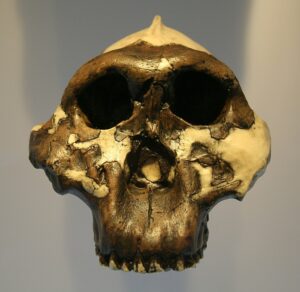Australopithecines, what does that mean?
The term Australopithecus refers to a group of individuals that vary greatly in size and morphological conformation. In reality, Australopithecus is an informal group, as it is not monophyletic (a group with a single common ancestor) but paraphyletic (a group with several common ancestors). For this reason, they may not all belong to the same genre. In fact, one of them has been classified in the genus Kenyanthropus. Although all other species are currently classified within the Australopithecus genus, this has not yet stabilized and could change in the future. The problem lies in the extreme difficulty of diagnosing kinship links between different Australopithecus species using cladistic analyses. As a result, until such time as this fine-tuned classification of Australopithecines is obtained, which could enable some of them to be grouped into different clades, and therefore different genera, paleoanthropologists are leaving (almost) all Australopithecines within the Australopithecus genus for the sake of convenience. Nevertheless, they are fully aware of the group’s paraphilia and, therefore, of the artificiality of the genre.
The earliest Australopithecines are dated at just over 4 million years (later abbreviated to Ma) and their chronological extension extends to around 1.9 Ma. This group has lived exclusively in Africa.
A little history of science
Australopithecus is one of the longest known genera. Indeed, the first Australopithecus was discovered in 1924 (almost 100 years ago!) in South Africa by Raymond Dart. This is Taung’s child. Dart named the species Australopithecus africanus in his 1925 publication.
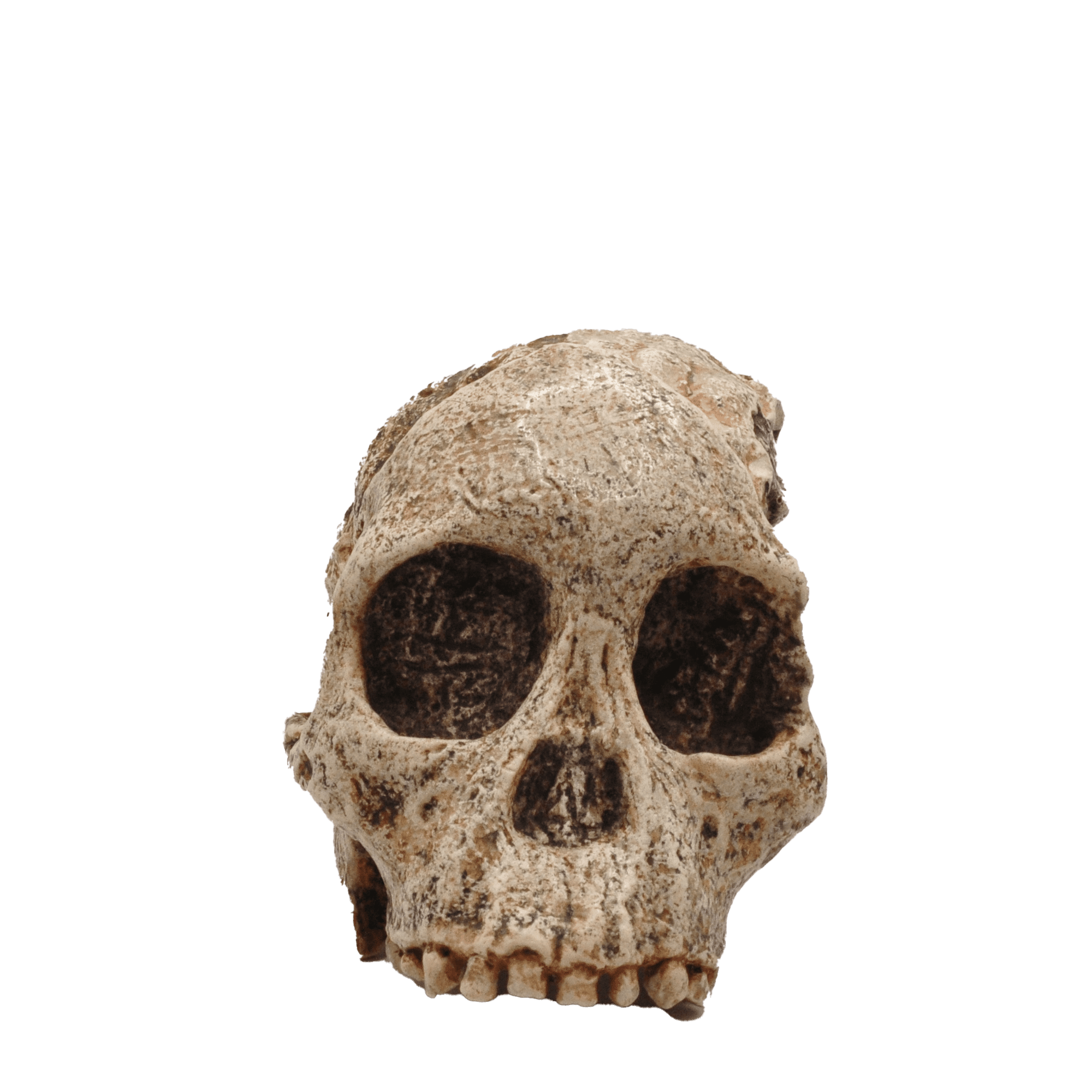
Subsequently, other fossil sites were discovered, again in South Africa, then, from the late 1950s, also in East Africa. Among the most important discoveries, you’ll probably be familiar with Lucy, a female australopithecine discovered by Maurice Taieb, Donald Johanson and Yves Coppens in 1974, who is related to the species Australopithecus afarensis.
At first, Taung’s child was not recognized as a human ancestor by almost all scientists for many years. It was only after the Second World War that the Australopithecus (he and other fossils discovered after him in South Africa) were consensually recognized as the most distant direct ancestors of man known at the time. Nevertheless, we now know that Australopithecines are not the ancestors ofHomo sapiens, but simply a line of Hominins.
The different species of Australopithecus
The multiplication of discoveries will lead to an explosion in the number of species. There are currently nine. Here they are:
- Australopithecus anamensis: 4.2 – 3.8 Ma (Ethiopia, Kenya)
- Australopithecus afarensis : 3.7 – 3 Ma (Ethiopia, Kenya, Tanzania)
- Australopithecus prometheus : 3.67 – 3 Ma (Sterkfontein, South Africa)
- Australopithecus deyiremeda : 3.5 – 3.3 Ma (Ethiopia)
- Kenyanthropus platyops : approx. 3.5 – 3.2 Ma (Kenya)
- Australopithecus bahrelghazali : 3.5 – 3 Ma (Chad)
- Australopithecus africanus : 3 – 2.5 Ma (South Africa)
- Australopithecus garhi : 2.5 Ma (Ethiopia)
- Australopithecus sediba : 2 Ma (South Africa)
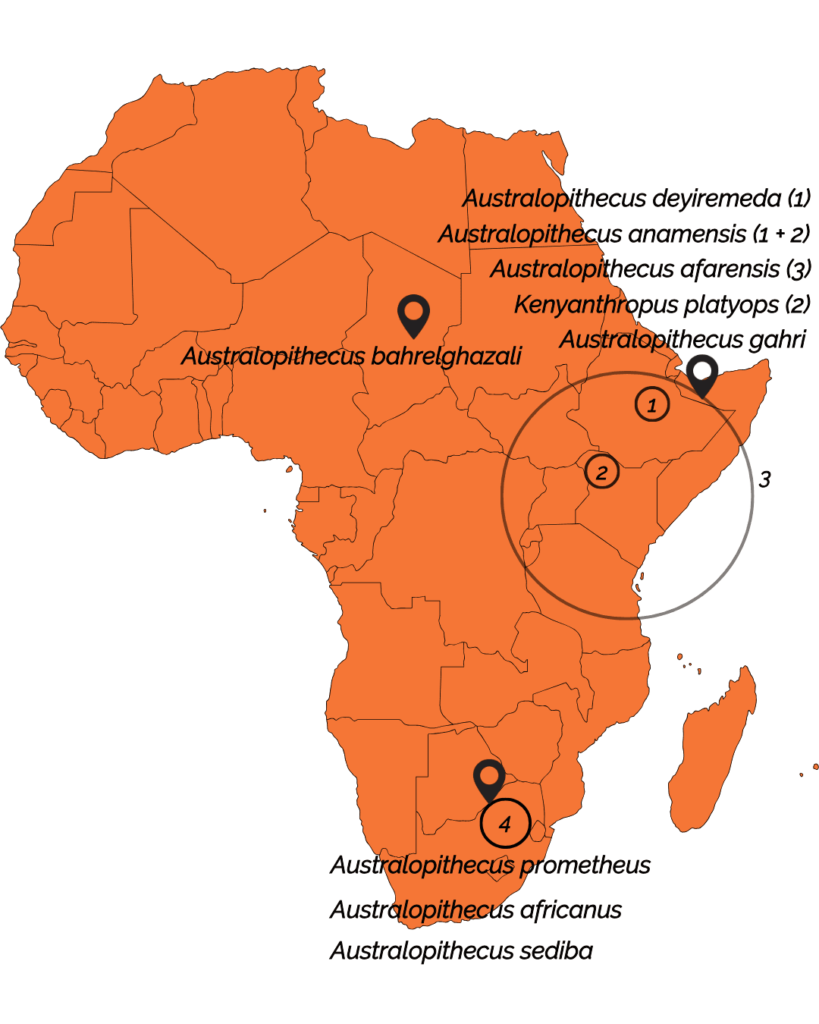
All these specimens were mainly found in three regions:
- Gauteng province (South Africa)
- Lake Turkana Basin (East Africa)
- Awash Valley (East Africa)
The deposits in these three regions account for 95% of the fossils found in Africa, even though they correspond to very small areas on the scale of the African continent. Bear in mind, therefore, that we are working with partial and highly localized information.
What are the main anatomical features of Australopithecines?
Australopithecines have a cranial capacity of between 380 and 500 cm3. The skull is low and elongated. The part of the skull just behind the eye sockets is very tight; the post-orbital constriction is said to be strong. The frontal bone is narrow and tapers backwards. Above the orbits, there is a postorbital torus, i.e. a bony thickening. This varies from one Australopithecus species to another.
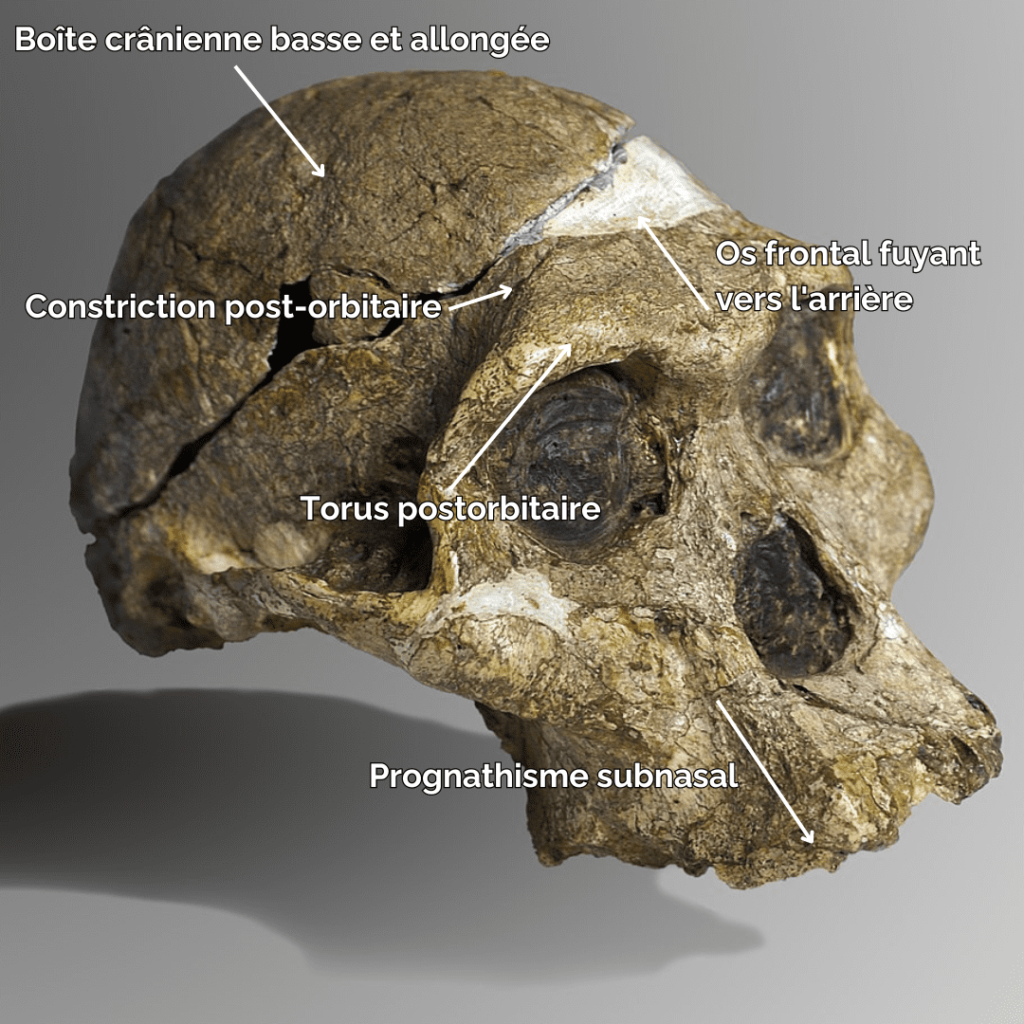
The face shows significant subnasal prognathism, i.e. forward projection of the face, mainly in the maxilla.
On the face, the zygomatic arches project to the sides. They are large and massive, indicating a strong masticatory force.

The mandible is massive, with a fairly high, thick mandibular body. The symphysis, where the two hemi-mandibles fuse, is more or less receding towards the back.
When it comes to teeth, there are major differences between species, as well as between males and females. Overall, you can see that molars are large. The canine teeth are smaller than those of chimpanzees, resulting in a gradual reduction in diastema (space between canine and incisor), until they disappear completely in some species.
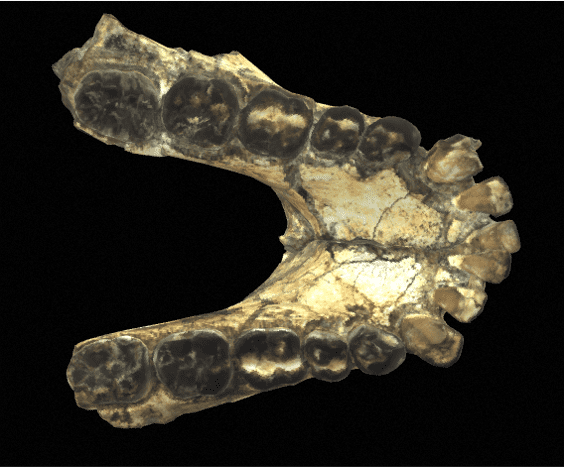
Australopithecine modes of locomotion
The upper limbs are longer than the lower ones, but it’s difficult to say more because the species in this genus are so different in size and conformation. Nevertheless, these proportions are similar to those found in chimpanzees. This suggests that Australopithecines were still climbing trees to get around. Nevertheless, they were also capable of bipedal movement, although their bipedalism bears no resemblance to our own. To find out more about the skeletal adaptations required for bipedalism, we invite you to read this article. Australopithecines were very diverse in terms of their locomotor apparatus, and did not all use the same mode of locomotion.
We would like to thank paleoanthropologist François Marchal for reviewing the first version of this article.
We hope you find this introduction to the Australopithecus genus interesting! Feel free to ask us questions and give us feedback on the blog. You can also contact us by e-mail. You can also follow us on Instagram, Facebook, TikTok, Twitter and YouTube!
See you soon,
The Prehistory Travel team.
Bibliography :
[1] Dominique Grimaud-Hervé et al.History of ancestors. The great adventure of prehistoryErrances,5th edition, 2015.
[2] B. Wood, Wiley-Blackwell Encyclopedia of Human Evolution, Wiley-Blackwell. Reprinted edition (2013).

